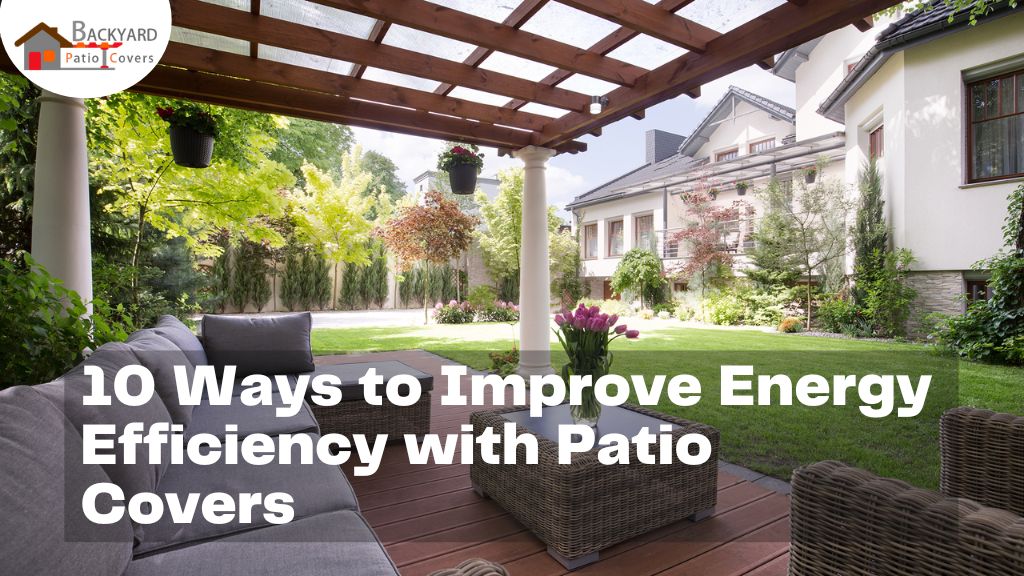Open patio covers are an excellent addition to any backyard, providing shade and style without completely enclosing the space. Choosing the right material for your open patio cover is crucial to ensure durability, aesthetics, and functionality. Here’s a guide to some of the best materials for durable and stylish open patio covers:
1. Wood
Wood is a classic choice for patio covers, offering a natural and timeless look that blends seamlessly with various outdoor settings. Some of the most popular types of wood used for patio covers include:
- Cedar: Known for its rich color and natural resistance to decay and insects, cedar is a durable and attractive option.
- Redwood: Similar to cedar, redwood is also resistant to decay and insects, with a beautiful reddish hue that adds warmth to any space.
- Pressure-treated Pine: This budget-friendly option is treated to resist rot and pests, making it a practical choice for long-lasting patio covers.
Pros: Natural beauty, customizable, versatile. Cons: Requires regular maintenance, can be expensive (especially hardwoods).
2. Aluminum
Aluminum is a popular material for modern patio covers due to its lightweight nature and low maintenance requirements. It’s resistant to rust and corrosion, making it ideal for various climates.
Pros: Lightweight, durable, low maintenance, available in many finishes. Cons: Can be less aesthetically pleasing than wood, may dent or scratch more easily.
3. Vinyl
Vinyl patio covers are known for their durability and minimal maintenance. They are resistant to moisture, rot, and insects, making them a long-lasting choice for open patio covers.
Pros: Low maintenance, durable, moisture-resistant, available in various styles and colors. Cons: Can warp or crack over time with extreme temperature changes, limited color options.
4. Steel
Steel offers strength and durability, making it an excellent choice for those looking for a robust patio cover. It can be powder-coated in various colors to match your outdoor decor.
Pros: Extremely durable, strong, low maintenance, customizable. Cons: Heavy, can be prone to rust if not properly treated, more expensive than other materials.
5. Fiberglass
Fiberglass is a versatile material that combines strength with a lightweight structure. It can be molded into various shapes and styles, offering a sleek and modern look for your patio cover.
Pros: Lightweight, strong, resistant to moisture and pests, available in various designs. Cons: Can be more expensive, limited availability in some areas.
6. Polycarbonate
Polycarbonate is a durable plastic material that is often used for patio covers due to its strength and transparency. It allows light to filter through while providing protection from UV rays and rain.
Pros: UV resistant, allows natural light, strong, lightweight. Cons: Can yellow over time, not as visually appealing as natural materials, can be more expensive.
Choosing the Right Material
When selecting the best material for your patio cover, consider the following factors:
- Climate: Choose a material that can withstand your local weather conditions. For example, if you live in a humid area, materials resistant to moisture and decay, like vinyl or aluminum, may be better suited.
- Aesthetics: Consider the overall look you want to achieve. Wood offers a natural, warm appearance, while materials like aluminum and steel provide a more modern look.
- Maintenance: Determine how much time and effort you’re willing to invest in maintenance. Wood requires regular staining or painting, while materials like vinyl and aluminum are virtually maintenance-free.
- Budget: Your budget will also play a significant role in your decision. Materials like pressure-treated pine are more affordable, while high-end options like redwood or steel may cost more.
Conclusion
Selecting the right material for your open patio covers in Orange County ensures that your outdoor space remains both durable and stylish for years to come. Whether you prefer the natural charm of wood, the modern appeal of aluminum, or the low maintenance of vinyl, there’s a perfect material to suit your needs and preferences. By considering your climate, aesthetic goals, maintenance requirements, and budget, you can make an informed decision that enhances your backyard and provides a beautiful, functional space for relaxation and entertainment.


